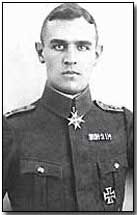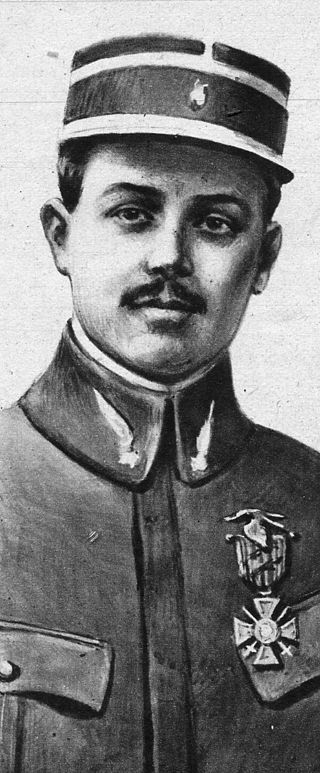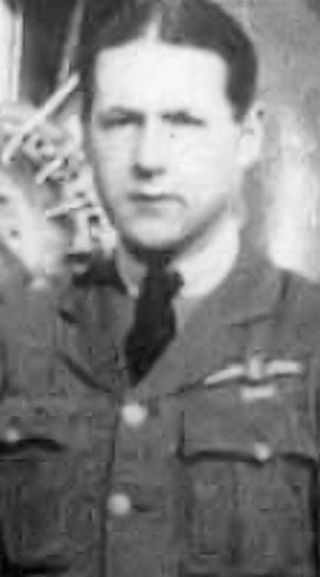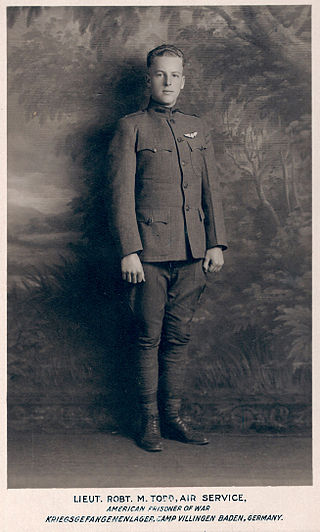Lieutenant Gerald Alfred Birks was a Canadian First World War fighter ace credited with twelve aerial victories while serving in the British Royal Flying Corps and Royal Air Force.

Franz Büchner PlM was one of the most successful German fighter aces of the First World War, shooting down 40 enemy aircraft. He began his military career as a 16-year-old infantryman. His doughty exploits earned him a battlefield commission just after his 18th birthday, in early 1916. After being wounded and invalided from the infantry, he joined the Imperial German Air Service. Once he progressed to become a fighter pilot flying a Fokker D.VII, he initially struggled to gain his first aerial victories. Something clicked after his fifth victory, and he began to regularly shoot down enemy airplanes, scoring 35 victories between 1 July and 22 October 1918. Most notably, he shot down four SPADs on 26 September. He survived the war, but died in action in 1920 while combating communist revolutionaries near Leipzig.

Francis Granger Quigley, was a Canadian aviator and flying ace of the First World War, who was credited with 33 aerial victories. He was notable for scoring the majority of his victories against German fighter planes.

Air Vice Marshal George Roberts Howsam, CB, MC was a Canadian First World War flying ace, officially credited with 13 victories. Serving in the newly formed Royal Canadian Air Force in the inter-war years, Howsam served as the RCAF's Director of Training during World War II.
Captain George Edwin Thomson DSO MC was a Scottish World War I flying ace credited with 21 aerial victories. He was the second ranking ace of his squadron, and one of the leading Sopwith Camel aces.
Lieutenant Alfred Victor Blenkiron was a British World War I flying ace credited with five aerial victories.

Capitaine Albert Louis Deullin was a French World War I flying ace credited with twenty aerial victories. He served for the entirety of World War I. By war's end, he had risen to command of a fighter wing. He would die in a postwar flying accident.

Group Captain Sidney Joseph "Jack" Cottle MBE's military career began during World War I. He became a flying ace in the latter years of the war, credited with thirteen aerial victories. His service would span three decades and three continents before his final retirement in 1944.
Captain Frank Clifton Gorringe was a British World War I flying ace credited with 14 aerial victories.

Lieutenant Kenneth Russell Unger was an American World War I flying ace credited with fourteen aerial victories. His candidacy rejected by his own nation, Unger applied to the British Royal Flying Corps for military pilot training in June 1917. Once trained, he was assigned to the Royal Naval Air Service (RNAS). As the RNAS was merged into the Royal Air Force, Unger scored his aerial victories between 26 June and 1 November 1918. In later life, Unger remained involved in aviation and served again during World War II. He also joined the U.S. Navy Reserves, rising to the rank of rear admiral.
Herbert Gilles Watson, was an Australian flying ace of the First World War credited with 14 aerial victories. He was the highest scoring New Zealand-born ace in the Australian Flying Corps, and the fourth highest scorer in his squadron.
Captain Charles Chaplin Banks was a World War I flying ace credited with thirteen aerial victories. He scored a pioneering night fighter victory on 31 May 1918, when he shot down a German Friedrichshafen G bomber.
Captain William Henry Hubbard DFC was a Canadian World War I flying ace credited with twelve aerial victories against enemy fighter planes despite spending a year and a half out of action. He was noted for his zeal in ground support missions, as well as his success against enemy fighters.
Captain Stanley Stanger was a World War I flying ace credited with 13 confirmed aerial victories scored on the Italian Front. He was also noted for his ingenious escape from being captured by the Austro-Hungarians.
Flight Commander Guy William Price was an Irish Royal Naval Air Service flying ace during World War I, having 12 confirmed aerial victories. He was awarded the Distinguished Service Cross twice within a 22-day period.
Major Alexander MacDonald Shook was a Canadian World War I flying ace. During his stint with the Royal Naval Air Service, he was credited with 12 official aerial victories.
Richard Jeffries Dawes DFC was a Canadian World War I flying ace credited with nine aerial victories.
Captain James Henry Forman DFC was a World War I Canadian flying ace credited with nine aerial victories. He was personally decorated by his king for his valor. After leaving military service in the 1920s, he would return to service in World War II.
Lieutenant William Benson Craig was a Canadian flying ace during World War I. He was credited with eight aerial victories over German fighter planes.

Lieutenant Robert Miles Todd was an American World War I flying ace credited with five enemy planes destroyed.






